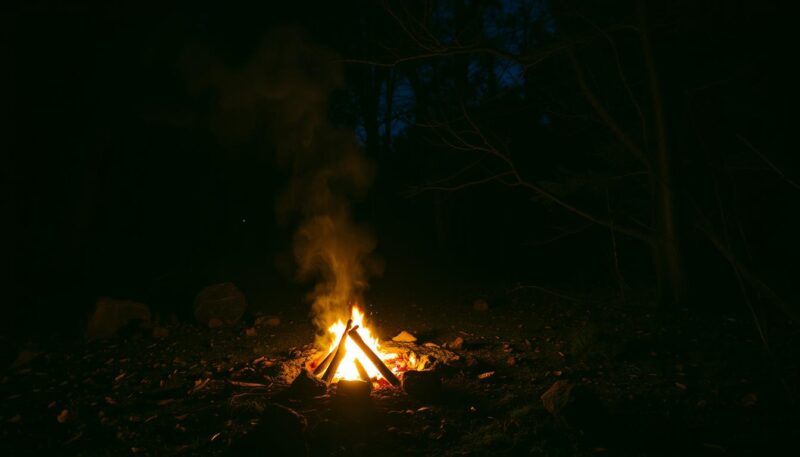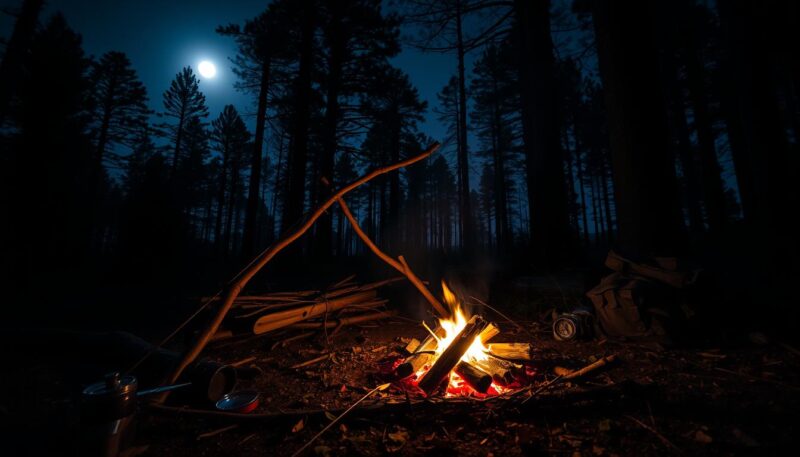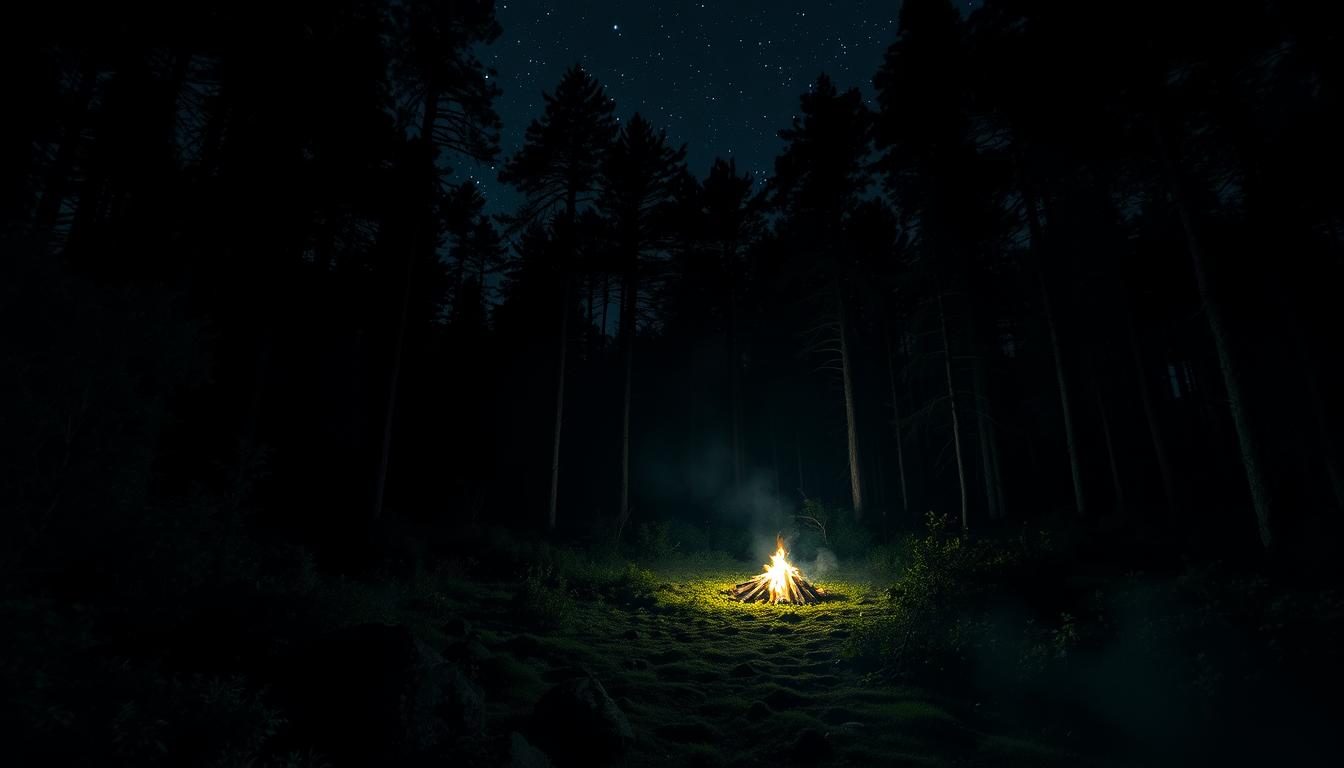Imagine hiking through a serene landscape, perhaps somewhere remote on the Appalachian Trail, when suddenly, you realize you’ve strayed off the path. In 2015, Geraldine Largay survived 26 days in the wilderness before succumbing to exposure and starvation after getting lost. This real-life scenario underscores the critical importance of wilderness skills and proper preparation.
The proliferation of survival TV shows often paints an unrealistic picture of emergency survival methods. Yet, practical knowledge, equipped with the correct tools—commonly referred to as the “10 essentials”—is vital. These essentials include a pocketknife, matches/lighter, map and compass, headlamp, sunglasses/sunscreen, raincoat, extra clothes, food, water, and a first aid kit.
Navigating the wilderness demands more than just having the right gear. Effective map-reading skills are paramount, but a staggering statistic reveals that less than 50% of hikers in Rocky Mountain National Park knew how to use a map and compass effectively. Have you honed your wilderness skills enough to stay safe?
Getting lost in the wilderness isn’t just a challenge faced by avid hikers and adventurers. Even scout leaders have noted that only every fourth or fifth scout carries essential supplies like water and food on excursions. These critical items can be lifesavers, literally. For instance, humans can survive weeks without food, but only three to six days without water.
If you find yourself lost in the sprawling wilderness, the STOP method—Stop, Think, Observe, Plan—can help regain control and ensure you make the right choices for survival. Knowing your surroundings and having a plan can significantly improve your chances of finding your way back to safety. Should you need to self-rescue, knowing the value of heading downhill is a lifesaver since civilization or roads are often found in lower elevations.
Key Takeaways
- Geraldine Largay survived 26 days in the wilderness before succumbing to exposure and starvation.
- The “10 essentials” for wilderness survival include a pocketknife, matches/lighter, map and compass, headlamp, sunglasses/sunscreen, raincoat, extra clothes, food, water, and a first aid kit.
- Less than 50% of hikers in Rocky Mountain National Park knew how to use a map and compass effectively.
- Humans can survive weeks without food, but only three to six days without water.
- Employ the STOP method—Stop, Think, Observe, Plan—when lost in the wilderness to regain control.
- The eastern US landscape ensures one is usually never more than 10 miles from a road, which can help find civilization quickly.
Stay Calm and Assess the Situation
When you find yourself lost in the wilderness, maintaining a sense of calm is crucial for effective emergency survival. It’s natural to feel panic, but recognizing and managing it can significantly enhance your chances of successfully navigating through the situation.
Signs of Panic and How to Manage It
Panic can manifest in various ways, like quickened breathing, disorientation, and irrational thinking. These signs can impede your ability to make sound decisions. Start by taking deep breaths to calm your nerves. Drinking water and eating a small snack can also help stabilize your mental state, enabling you to address survival priorities more effectively.
Using the STOP Method
The STOP method is a widely recommended strategy for emergency survival. It stands for Stop, Think, Observe, and Plan:
- Stop: Halt and sit down immediately. This helps prevent wandering further off-course.
- Think: Contemplate your situation calmly and avoid making hasty decisions.
- Observe: Take stock of your surroundings. Look for landmarks, water sources, and potential shelter locations.
- Plan: Devise a logical plan based on your observations. Creating a structured approach can help you prioritize your actions efficiently.
Utilizing the STOP method ensures that you create a structured plan and address your survival priorities effectively. By maintaining composure and methodically assessing your environment, you increase your chances of overcoming challenges in the wilderness.
Build a Shelter Using Natural Materials
Building a shelter using natural materials is essential for surviving the night in the wilderness. A well-built shelter can protect you from the elements, retain heat, and provide psychological comfort. The ability to construct a shelter quickly, ideally within 15 minutes, allows time for other critical survival tasks like finding insulation, gathering firewood, and starting a fire.
Types of Natural Shelters
Different types of natural shelters cater to various environmental conditions. Here are some effective designs:
- Lean-to Shelter: This simple structure uses a sturdy branch as the main support, with smaller branches, leaves, and natural materials to create walls. Perfect for windy conditions, it offers limited yet quick protection.
- A-frame Shelter: Ideal for rain and snow, the A-frame uses two sturdy branches leaned together, covered with layered natural materials, to create a small, triangular shelter.
- Debris Hut: Created from a deep pile of leaves, twigs, and other debris, this hut traps body heat efficiently, providing insulation and warmth.
- Fallen Tree Shelter: Utilize a naturally fallen tree by building around it using branches and leaves. This shelter is sturdy and durable against elements.
Finding and Utilizing Insulation
Choosing insulating materials is critical for a functional shelter. Natural insulation like leaves, pine needles, and evergreen boughs can trap your body heat effectively, boosting the shelter’s warmth. Look for materials that can provide a thick layer between you and the ground to prevent contact with cold surfaces.
Creating a bough bed with evergreen branches or leaves can significantly enhance comfort and thermal protection. It’s crucial to ensure that your shelter is windproof and waterproof to maximize its effectiveness in surviving the night.
Here’s a quick guide on choosing insulation:
| Insulation Material | Advantages | Uses |
|---|---|---|
| Leaves | Readily available, effective in trapping heat | Layer on floor and walls of shelter |
| Pine Needles | Good insulator, retains shape | Layer on floor, underneath boughs |
| Evergreen Boughs | Dense, provides structural support | Constructing beds and windbreaks |
Using these natural materials for insulation is an invaluable skill in wilderness survival. By constructing a well-insulated shelter, you can ensure better protection and warmth, which are crucial for surviving the night in harsh environmental conditions.
Finding and Purifying a Water Source
Accessing a reliable water source is essential for survival. You can live for more than three weeks without food, but typically you won’t make it much past three days without water. When you’re navigating the wilderness, knowing how to locate and purify water is vital to your survival.
Identifying Safe Water Sources
Identifying safe water is a critical skill in outdoor safety. Flowing bodies of water, such as rivers and streams, are preferable over stagnant ones like lakes. Walking downhill often leads to water sources due to the natural flow of water. An increase in vegetation density and darker green patches can indicate the presence of water. Animal behavior can also serve as a clue: game trails and bird activity often point toward a water source. In snowy conditions, melting snow or ice is preferable to eating it directly to avoid lowering your body temperature. Rainwater is generally pure and acts almost like distilled water, making it one of the easiest sources to collect.
Methods of Purification
Once you’ve identified a water source, purifying it is crucial to avoid waterborne diseases. Here are some effective methods of purification:
- Boiling: Bring the water to a rolling boil for at least one minute (or three minutes at higher altitudes) to kill most pathogens.
- Filtration: Using a portable filter or a filtration straw can remove bacteria and parasites. Brands like LifeStraw are convenient for immediate consumption.
- Chemical Treatment: Water purification tablets or drops, such as those containing iodine or chlorine dioxide, are lightweight and effective.
- Solar Stills: This method uses the sun’s heat to evaporate and then condense water, which can be distilled from non-potable sources.
Remember, untreated water is generally less harmful than dehydration, as most waterborne diseases can be treated afterward. Ensure outdoor safety by always prioritizing identifying safe water and knowing methods of purification.
Start a Fire for Warmth and Signals
When you find yourself in the wilderness, knowing how to start a fire is a vital survival skill that can make a significant difference in your emergency survival situation. A fire provides essential warmth, light, a means to cook food, purify water, and can even serve as a distress signal visible to rescuers.
Using a Fire Starter
To enhance your chances of survival, having a ready fire starter is crucial. Tools such as lighters, waterproof matches, or flint starters simplify the ignition process, making it easier to start a fire even in challenging conditions. Lighting a fire should always be done with utmost care to prevent unintended wildfires.

Beyond providing warmth, a fire serves as a visual and olfactory signal to rescuers. The light from a fire can be seen from a distance, while the smoke and scent can further alert search parties to your location, significantly increasing your chances of being found. In an emergency survival scenario, these signals are indispensable for alerting potential rescuers to your presence.
| Basic Survival Skill | Importance | Notes |
|---|---|---|
| Fire | Essential for warmth, cooking, purifying water, and signaling | Ensure to collect double the amount of firewood needed for the night. |
| Shelter | Protects body from exposure | Using layering and space blankets for insulation. |
| Signaling | Alerts rescuers | Utilize fire, bright colored markers, and ground messages such as S.O.S. |
| Food & Water | Maintain hydration and nourishment | Avoid consuming unknown plants; ration sweat, not water. |
| First Aid | Crucial for treating injuries | Carry a first aid kit and create a medical checklist. |
Signaling for Help With an Emergency Whistle
When lost in the wilderness, getting the attention of rescuers is one of the top survival priorities. An emergency whistle is one of the most effective tools for signaling for help due to its piercing sound. The universal distress signal with a whistle involves three short blasts in succession, making it distinguishable from other noises in the environment.
Effective Signaling Techniques
Using effective signaling techniques can drastically improve your chances of being found. Aside from the emergency whistle, signal mirrors can create visible flashes in sunlight, seen from miles away. Ground-to-air symbols formed with contrasting materials, like rocks or logs, can convey distress messages to aerial search teams. At night, flashlights or headlamps flashing in a rhythmic pattern of three can signal your location to rescue crews, while strobe lights offer visibility in extreme conditions.
Alternative Signaling Methods
In addition to using an emergency whistle, fires and smoke are time-tested methods for signaling for help. Creating three fires in the shape of a triangle is a recognized distress signal. During the day, smoke signals can draw attention, and at night, the fire’s glow can be spotted from afar. Handheld satellite messenger devices and GPS locator beacons provide precise locations to rescue teams, significantly improving the chances of a swift rescue. Even something as simple as a brightly colored coat hanging on a tree can be a lifesaver.
Combining these signaling methods ensures that both audible, visual, and sensory signals work together, increasing the likelihood that rescuers will spot and save you. Remember, no matter the situation, strategic use of your available resources for effective signaling techniques is essential for survival.
Basic Survival Techniques for Nighttime Survival
Surviving a night in the wilderness requires mastering basic survival techniques and essential wilderness skills. Your top priority should be finding or creating a shelter to protect yourself from exposure to dangerous elements. Constructing a reliable shelter can effectively shield you from harsh weather conditions, thus helping maintain your body temperature and reducing the risk of hypothermia.

Utilizing natural materials for shelter is a critical survival skill. You can use sturdy branches for framing, pine needles, grass, and moss for insulation, with rocks and vines to secure and tie the structure. A lean-to shelter is particularly recommended due to its simplicity and availability of materials. Gather materials, clear the site, frame your shelter, attach a ridge pole, construct a lattice, and add a covering for protection.
Maintaining body warmth is crucial for nighttime survival. Layers of clothing or emergency blankets can help you conserve heat. If you have tools, starting a fire is another critical task. Utilize your fire starter, and gather dry kindling to sustain a warm fire throughout the night. This will provide warmth and can act as a signal for rescuers.
Outdoor safety dictates that you remain hydrated, avoiding dehydration, which can compromise your physical and mental condition. Find and purify water from nearby sources using filtration devices or natural purification methods. If possible, collect rainwater or morning dew. Conserve your energy, rest adequately, and maintain a positive mindset to avoid exhaustion.
When equipped with navigation tools such as a map and compass, you may consider re-navigating towards safe zones. However, proceed with caution to prevent further disorientation or exposure to new hazards. Prioritize safety by understanding your surroundings, recognizing landmarks, and always being aware of your position.
Implementing these basic survival techniques, focusing on nighttime survival, and enhancing your wilderness skills will significantly boost your chances of enduring a night in the wild. Proper preparation, informed decisions, and the right actions can make all the difference.
Surviving a Night in the Wilderness: Prioritizing Your Actions
When facing a night in the wilderness, having the right wilderness skills and being aware of survival priorities can mean the difference between life and death. Strategizing effectively amidst the elements is crucial for emergency survival. Understanding and prioritizing the actions needed for outdoor safety will enhance your survival prospects significantly.
One of the first actions to take when you find yourself in such a scenario is to assess your immediate environment and health condition. Determine if there are any immediate threats to your life, such as severe weather or injuries, and address them promptly. Focus on stabilizing critical issues: Airway, Breathing, Circulation, and severe bleeding, which are essential for survival.
Following this, the next priority is to secure a shelter, especially important if you face extreme cold or wet conditions. Remember, you can only survive about three hours without shelter in a harsh environment. Building a shelter using natural materials is a vital wilderness skill, protecting you from the elements and preserving body heat.
Water procurement is your next priority. It’s crucial to find a clean water source since dehydration poses a serious threat; you can survive up to three days without water, given that you stay sheltered. Learning methods of identifying safe water sources and purification techniques is essential for your emergency survival toolkit.
After ensuring shelter and water, the importance of signaling for rescue cannot be overstated. Using effective signaling techniques, such as an emergency whistle or signal mirror, maximizes your visibility and the likelihood of being found. Each action should be weighed carefully, taking into account the surrounding environment, available resources, and your physical condition.
Lastly, while food may be on your mind, it’s essential to realize that you can survive up to three weeks without food if you have shelter and water. Your energy is better spent on maintaining your shelter, water supply, and signaling efforts. This conservative approach to prioritizing actions underscores the importance of preparation and sound judgment, both of which are integral to mastering wilderness skills.
| Priority | Action | Survival Timeframe |
|---|---|---|
| 1 | Airway, Breathing, Circulation | 3 minutes without air |
| 2 | Shelter | 3 hours without shelter in harsh conditions |
| 3 | Water | 3 days without water |
| 4 | Signaling for Help | Immediate visibility for rescue |
| 5 | Food | 3 weeks without food |
In conclusion, emphasizing the prevention of crises and developing strong wilderness skills should be your primary focus in any emergency survival situation. By prioritizing shelter, water, and signaling ahead of food, and maintaining a conservative judgment, you can significantly enhance your chances of outdoor safety and survive a night in the wilderness.
Conclusion
Surviving a night in the wilderness demands calmness, resilience, and the application of both wilderness skills and available resources. From building a sturdy shelter to finding and purifying water, each step is critical. Remember, exposure is a leading cause of death for individuals lost outdoors, as revealed in a 2003 study on dementia patients. Therefore, understanding how to create effective shelters cannot be overstated. Hypothermia, a significant threat, can occur even on summer nights, underscoring the need for proper preparation and knowledge.
Throughout this article, we’ve explored essential survival techniques such as staying calm with the STOP method, building shelters, securing and purifying water, starting a fire, and effective signaling methods using an emergency whistle. Practical wilderness skills, such as the ability to identify safe water sources and medicinal plants, can significantly increase your chances of survival. Although you may spend hours fishing without success or wrestle with visual and audio hallucinations, maintaining focus and employing your survival strategies will be instrumental.
Ultimately, emergency survival in the wilderness hinges on preparation and knowledge. By prioritizing actions such as staying warm, hydrated, and properly signaling for help, you enhance your chances of overcoming the challenges and returning to civilization safely. Through education and comprehensive preparedness, you can face the daunting task of surviving a night in the wilderness with confidence, fortitude, and hope.
FAQ
What are the first steps I should take if I get lost in the wilderness?
Stay calm and assess the situation. Recognize signs of panic, such as quick breaths and confusion. Use the STOP method: Stop, Think, Observe, Plan, to make rational decisions. This will help you to regain control and take the right actions for survival.
How can I effectively manage panic when lost in the wilderness?
Recognize the signs of panic and focus on deep breathing to calm yourself. Drink some water and eat to stabilize your energy. Apply the STOP method to transition from panicked to rational thinking, which involves stopping to reassess the situation, thinking clearly, observing your surroundings, and planning your next steps.
What are the best types of shelters I can build using natural materials?
You can build several types of shelters, such as lean-tos or debris huts. These shelters use branches, leaves, and other natural materials. They provide protection from the elements and help in retaining body heat, crucial for surviving the night.
How do I use natural insulation to keep warm in my shelter?
Use materials like leaves, pine needles, and dry grass as insulation. Place these materials inside your shelter to create a barrier between you and the cold ground. This helps in conserving body heat and provides additional warmth.
How can I identify a safe water source in the wilderness?
Look for flowing water sources like streams or springs, ideally away from potential contaminants. Standing water can be dangerous to drink as it may contain bacteria and parasites. Always prioritize moving water when possible.
What methods can I use to purify water in the wild?
Purification methods include boiling water, using water purification tablets, or employing portable water filters like filtration straws. These methods help to remove harmful pathogens and ensure the water is safe to drink.
What is the safest way to start a fire in the wilderness?
Use fire starters such as lighters, waterproof matches, or flint starters. Gather dry tinder and small sticks to initiate the fire. Construct a safe fire ring if possible to contain the flames and prevent wildfires. Ensure you have a plan to extinguish the fire fully when it’s no longer needed.
How can I effectively signal for help when lost?
Use an emergency whistle to produce a loud, piercing sound. Patterns of three blasts are recognized as a call for help. Alternative methods include using mirrors to reflect sunlight, brightly colored clothing, and visible fire or smoke signals. These methods can attract rescuers’ attention from a distance.
What are key nighttime survival techniques in the wilderness?
Essential nighttime techniques include finding or building a shelter to avoid exposure, keeping yourself warm with layers or emergency blankets, and staying hydrated. Conserve energy by resting and maintaining a positive mindset. If available, use navigation tools to re-orient yourself, but avoid actions that may lead to further disorientation or exposure to hazards.
How should I prioritize my survival actions when lost in the wilderness?
Prioritize establishing shelter to protect against the elements, finding and purifying water to prevent dehydration, and signaling for help. Each decision must consider the environment, your health condition, and available resources. Skills like fire-making and constructing shelter, combined with effective signaling, significantly enhance your survival chances.
Source Links
- https://www.theguardian.com/travel/2016/may/31/wilderness-survival-outdoor-gear-life-saving-tips-hiking-camping
- https://wvdnr.gov/survival-skills-ten-things-to-do-when-lost-in-the-woods/
- https://www.cnn.com/travel/article/wilderness-how-to-survive-wellness/index.html
- https://www.nuvancehealth.org/health-tips-and-news/10-essential-outdoor-survival-tips
- https://www.gore-tex.com/blog/wilderness-survival-guide
- https://swiftsilentdeadly.com/basics-of-wilderness-survival-shelter-building/
- https://www.desertislandsurvival.com/how-to-build-a-shelter/
- https://www.artofmanliness.com/skills/outdoor-survival/how-to-build-the-ultimate-survival-shelter/
- https://scoutingmagazine.org/2019/04/finding-water-in-the-wilderness/
- https://www.desertislandsurvival.com/how-to-find-water/
- https://wildernessawareness.org/articles/5-basic-survival-skills/
- https://www.m4040.com/Survival/Skills/Fire/Fire.htm
- https://www.fieldandstream.com/survival/ways-to-signal-for-help-in-the-wilderness
- https://scoutingmagazine.org/2019/02/signaling-for-help-in-the-wilderness/
- https://mtntough.com/blogs/mtntough-blog/5-survival-skills?srsltid=AfmBOorP3IwEglmRFYMma8xQElyLrYqW3p_tfQ7va462ZvOlGWO4WP-a
- https://natureofthenorth.co/basics/mountain-survival-strategies/
- https://www.offgridweb.com/survival/from-dusk-till-dawn-the-basics-of-surviving-the-night/
- https://www.nps.gov/dena/planyourvisit/survival.htm
- https://www.trailhiking.com.au/safety/survival-rule-of-threes-and-survival-priorities/
- https://thesurvivaluniversity.com/survival-tips/wilderness-survival-tips/general-survival-tips/rule-of-three
- https://www.lifelisted.com/blog/surviving-alone-in-the-wilderness-for-a-month/
- https://earthworkprograms.com/why-you-should-learn-how-to-build-a-wilderness-survival-shelter-to-enhance-your-bushcraft-skills/

